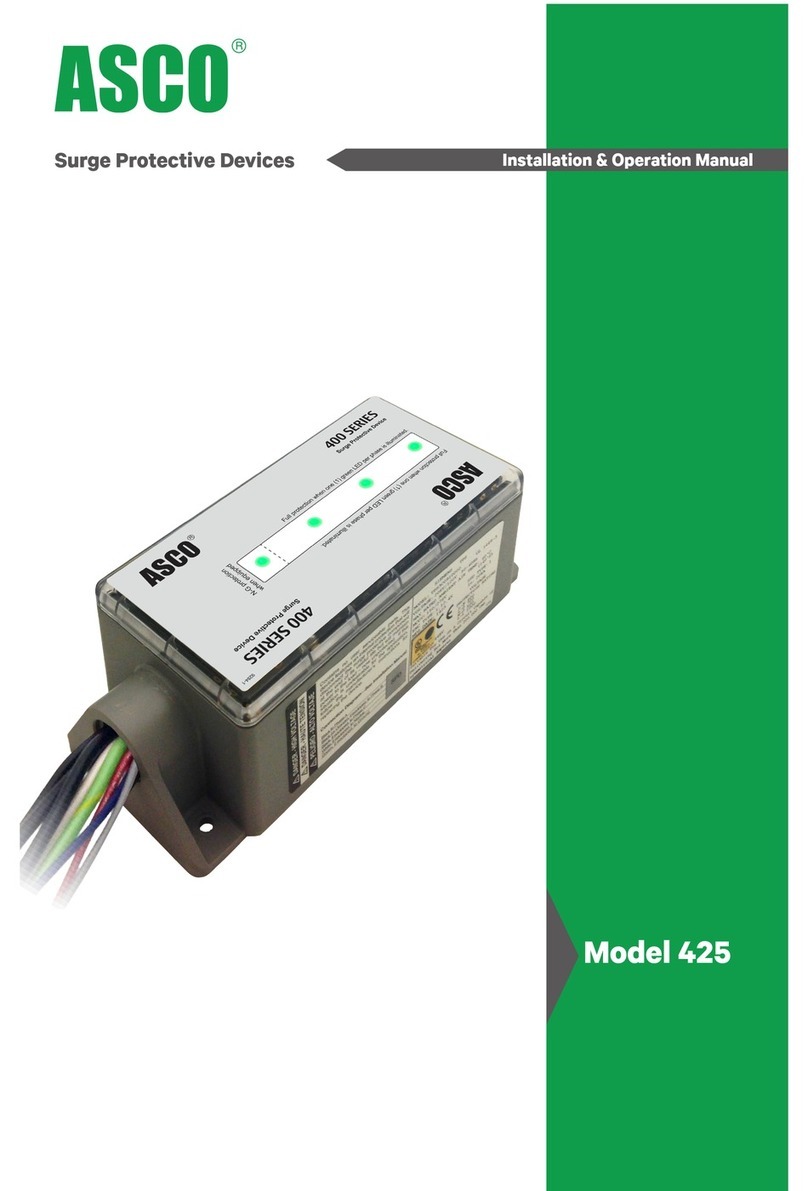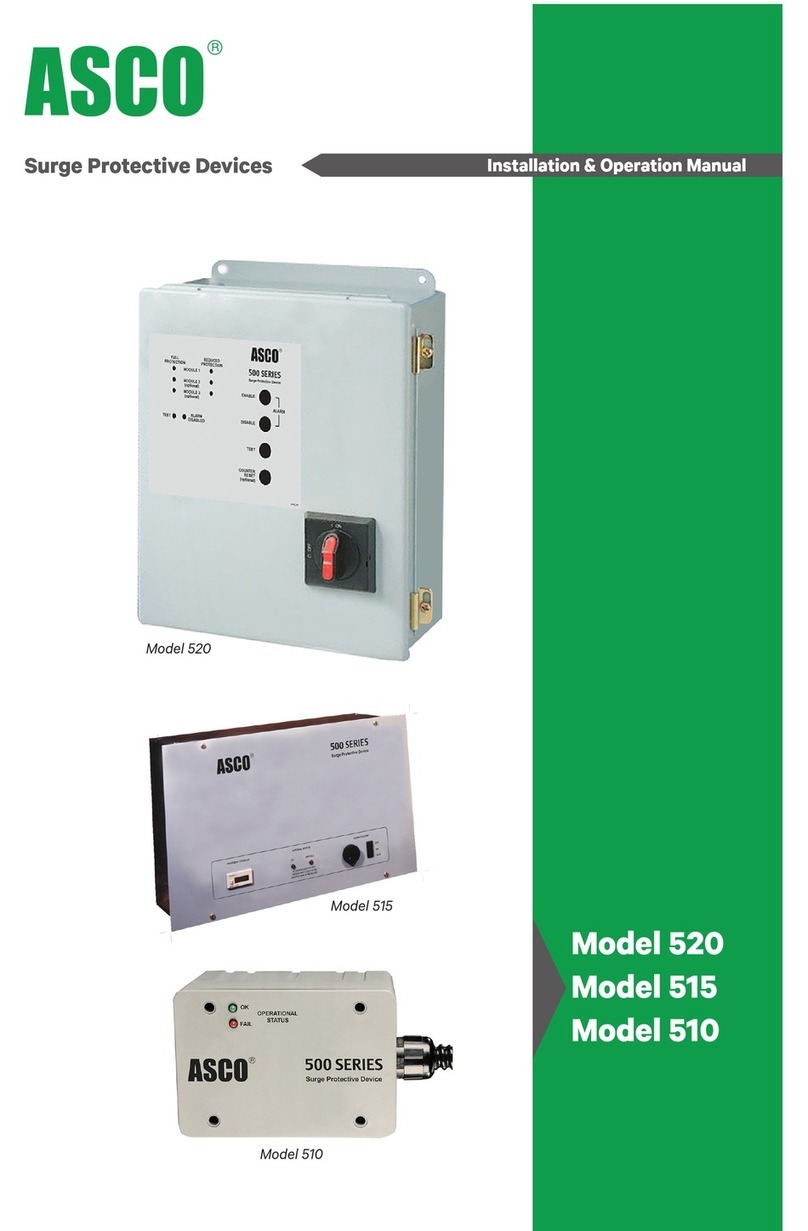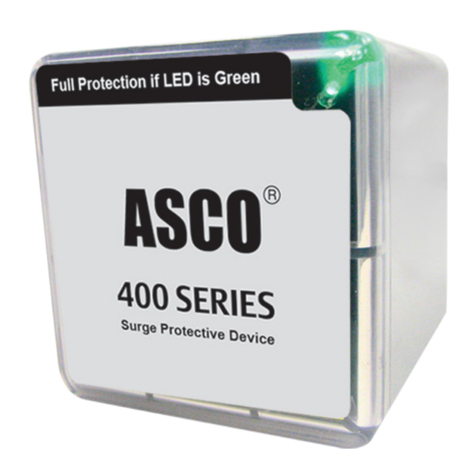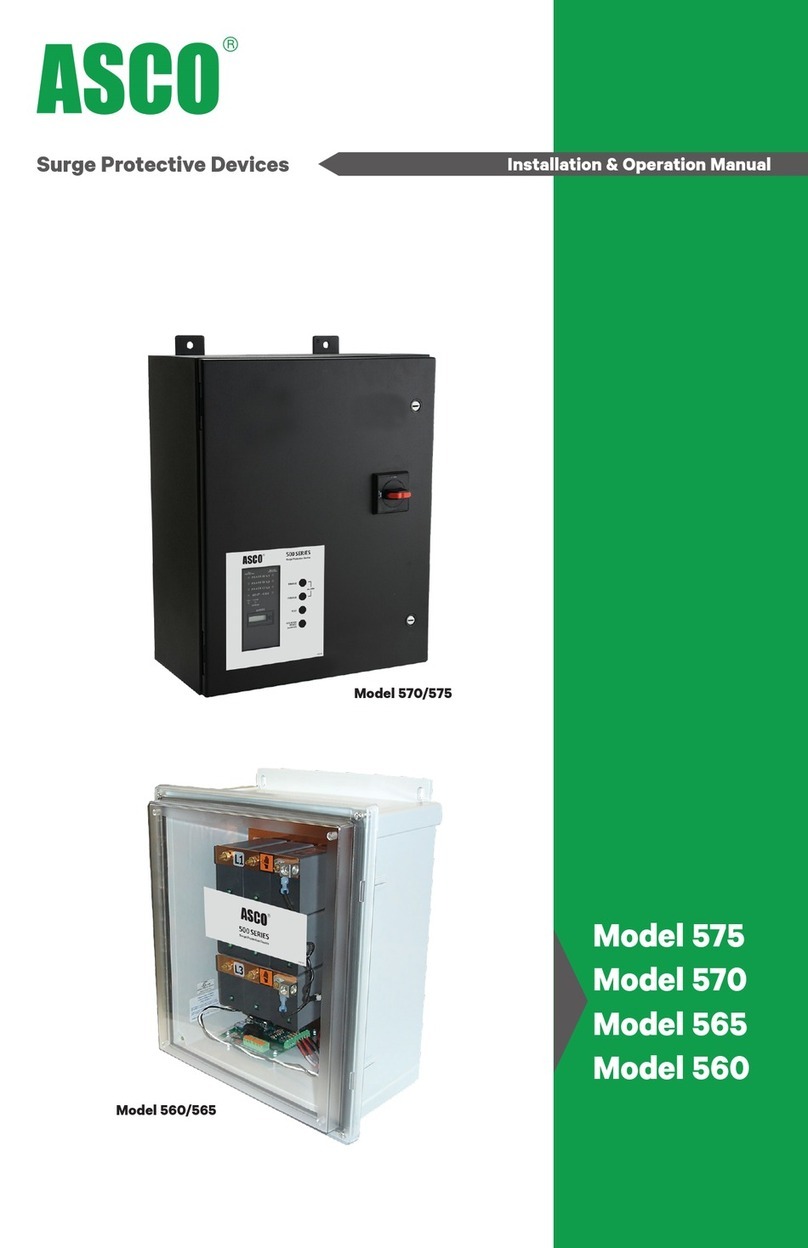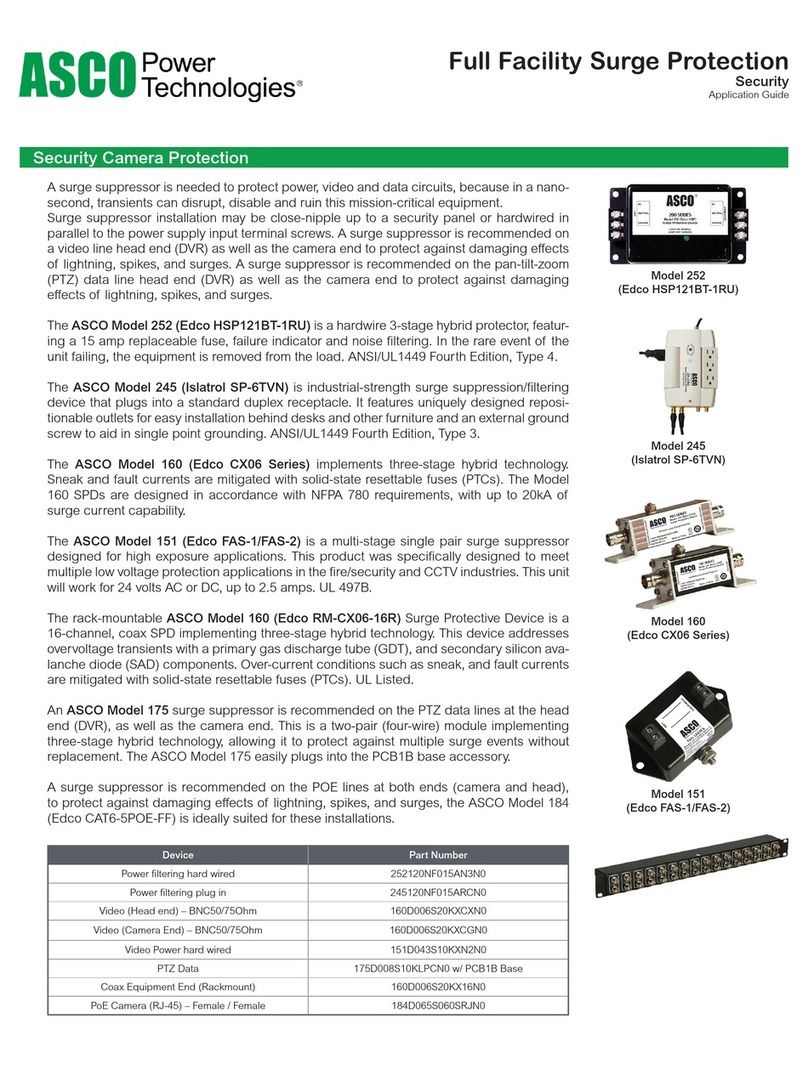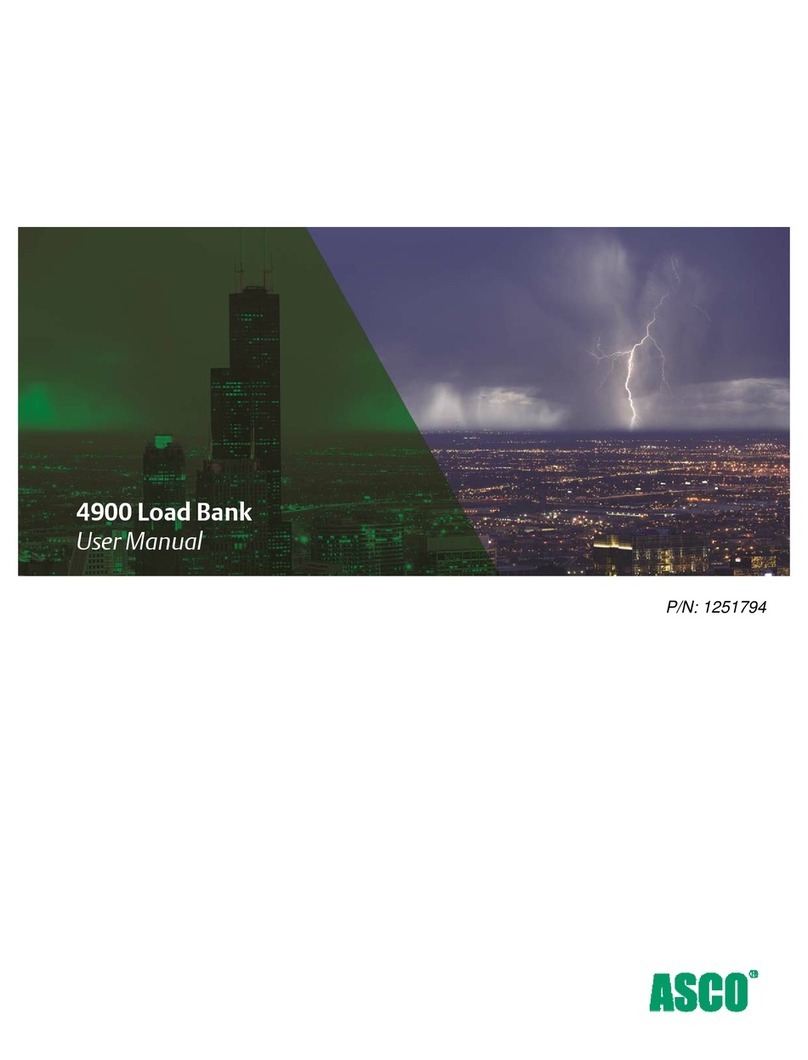Installation, Operation and Maintenance Manual IO-70063 RevD 03-185
GENERAL INFORMATION
This is a Type 2 SPD. It includes internal overcurrent protection. Type 2 SPDs are suitable for installation
on the load side of the service disconnect overcurrent device.
This device features internal overcurrent and overtemperature protection that will disconnect eected
surge suppression components at the end of their useful life, but will maintain power to the load – now
unprotected. If this situation is undesirable for the application, follow these instructions for servicing or
replacing the device.
Service of this unit consists of replacing internal modules and/or display assembly.
There are no user-serviceable parts inside the replaceable modules. Do not attempt to disassemble the
module as it stores charge and is potted.
Simplified Explanation of Operation
SPDs sense overvoltage and create a momentary short circuit to redirect harmful surge energy to earth
ground. Then they reset automatically and wait for the next surge. This is similar to the pressure relief
valve on a water heater: pressure goes up, valve opens to relieve pressure and then resets. In an electrical
system, an SPD senses overvoltage, shorts temporarily sending energy to ground and then resets. SPDs
are capable of repeating this function thousands of times.
Parallel Connection
This is a Parallel connected SPD – not series connected. As outlined above, an SPD ‘drains o’ excessive
voltage from an electrical system. Because of parallel connection, installation of the SPD near the
equipment to be protected is satisfactory. This eect is similar to flushing any toilet in a house; pressure
in the shower goes down. In an electrical system, a parallel connected SPD will remove excessive voltage
o the entire system (assuming reasonable proximity).
Tip: It is critically important that wiring leads be configured as short & straight as possible. Avoid long leads.
Avoid sharp bends. Route SPD conductors in the same conduit. Leads do not have to be sized for the entire load
– this SPD is parallel connected, not series connected. As a generalization, 6 AWG works fine.
Precautionary Statement Regarding SPDs on Ungrounded Systems
Caution – Ungrounded systems are inherently unstable and can produce excessively high line-to-ground
voltages during certain fault conditions. During these fault conditions, any electrical equipment including
an SPD, may be subjected to voltages which exceed their designed ratings. This information is being
provided to the user so that an informed decision can be made before installing any electrical equipment
on an ungrounded power system.
Unpacking & Preliminary Inspection
Inspect the entire shipping container for damage or signs of mishandling. Remove the packing materials
and further inspect the unit for any obvious shipping damages.
If any damage was found and is a result of shipping or handling, immediately file a claim with the shipping
company and forward a copy to ASCO.
Storage Environment
This SPD should be stored in a clean, dry environment. Storage temperature range is -40°C (-40°F) to
+60°C (+140°F). Avoid exposure to high condensation.






